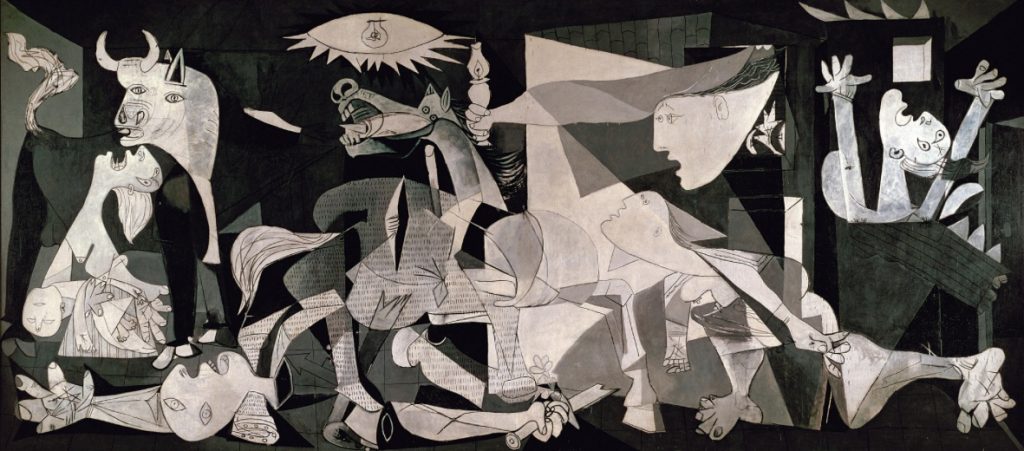MADRID – Pablo Picasso’s famous artwork Guernica, depicts the suffering of individuals in war. Painted in 1937, it brought the Civil War to international attention going on tour. Later it stayed in the custody of New York’s Museum of Modern Art (MoMA).
The large oil on canvas (349,3 x 776,6 cm) is now part of the permanent collection in the Museo Reina Sofia in Madrid. However, in 1958 Picasso extended the loan of the painting to MoMA for an indefinite period – until democracy had been restored in Spain.
It was not until 1981 that the work finally returned to Spain.
What happened in Gernika?
The Spanish Civil War started in 1936. On 26th April 1937, the German Condor Legion and the Italian Legionary Air Force carpet bombed the city of Gernika in the Basque Country. The bloody attack took place on market day when much of the local population was gathered in the town’s streets.
Picasso had seen dramatic photographs published in various periodicals, including the French newspaper L’Humanité.
The mural

When the Spanish Government asked him to create a painting for its pavilion at the 1937 International Exposition, their brief was to expose the horrors of the civil conflict to the rest of Europe, and thereby request support.
Faced with the challenge, Picasso drew inspiration from that attack.
The mural does not contain a single allusion to the event. The message instead is a plea against the terror and barbarity of war. The suffering of individuals, the human tragedies are anti-war symbols that speak clearly from the painting.
Once completed, Guernica went on a brief world tour. It achieved its aim of bringing the Spanish Civil War to the world’s attention.
Rethinking Guernica
The Museo Reina Sofia has an interesting website including previously unpublished documents, gigapixel images and more. Called Rethinking Guernica, it examines the work and the man behind it.


